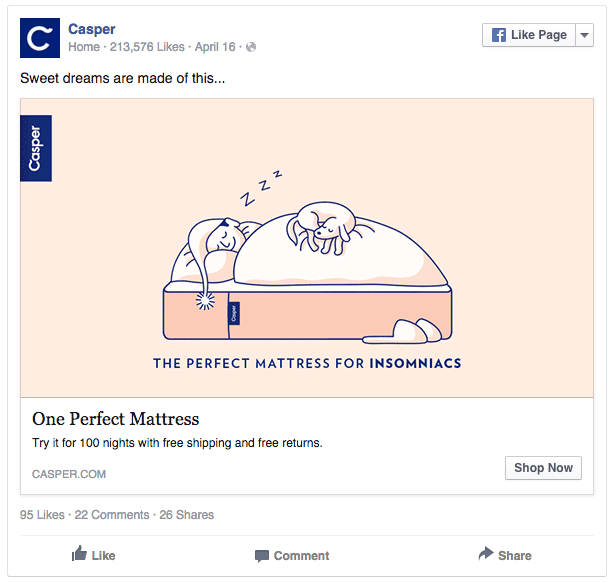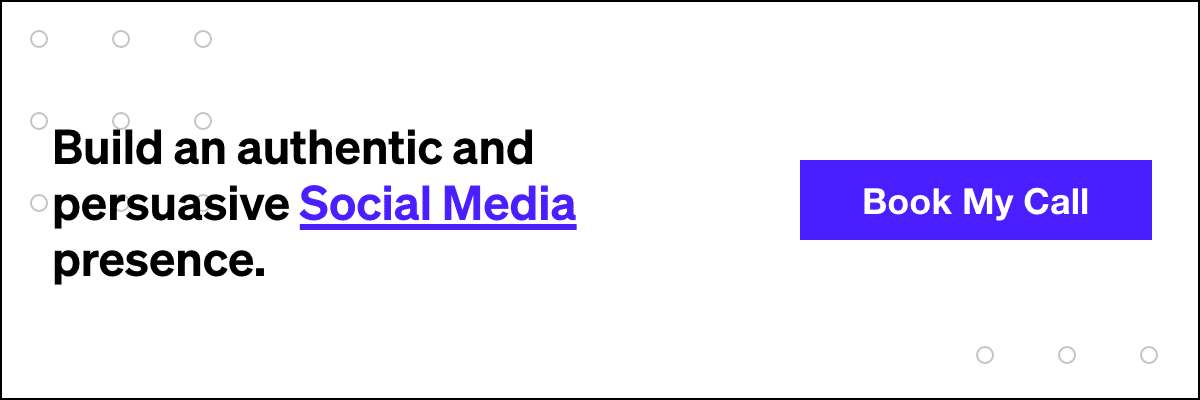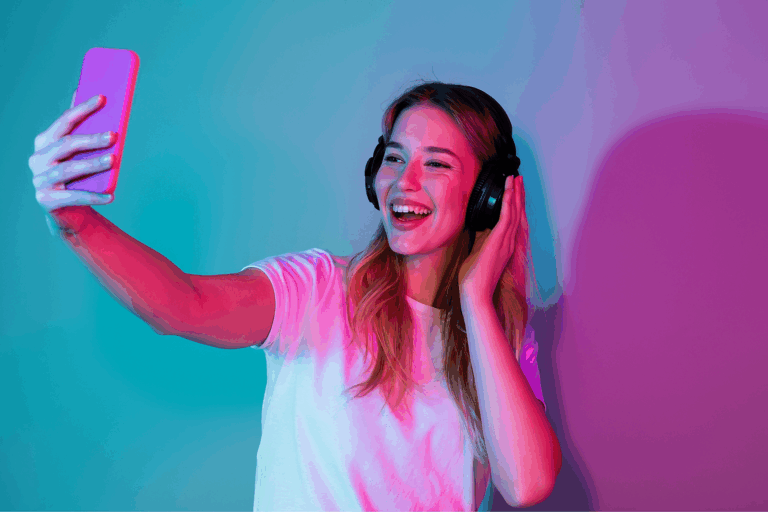How to Run Facebook Ads That Convert

When you see an ad campaign on your Facebook timeline, you might not give much thought. Maybe you’re not interested. Maybe you pause for a moment before ultimately scrolling past. Or maybe it’s exactly what you’ve been looking for. As a consumer, this last option feels like a happy coincidence—the product or service you need falls right into your lap.
But as the marketer, these moments are anything but coincidental.
Running FB ads that garner enough interest for a click, and especially a conversion, is a careful science. Your campaign goal requires targeting the right people, at the right time, with the right content. Of course, you can’t control your consumers’ online behavior, but you can predict and account for it when creating, publishing, and targeting your Facebook advertising strategy.
Let’s talk about the details of social advertisements.
The Who: Targeting the Right Audiences
Nope, not the rock band. We’re talking about your current and potential customer bases.
The beauty of advertising on Facebook is just how easy it is to reach the right people. But with more than 2.7 billion active users each month1, you first have to identify the different audience and how they’ll respond to different products, events, and ad campaigns.
First, let’s look at your options for targeting and how you might use these to your advantage as a facebook advertiser2:
- By location – This one is relatively straightforward but powerful nonetheless. If you’re holding in-person events, pop-up shops, special sales, or your services are only offered in select areas, it’s imperative to first filter out the people that won’t benefit from your business. You can also target broader categories, like users in big cities or rural towns.
- By age & gender – Targeting based on these broad demographics requires making a few equally broad generalizations about your target audience. It’s imperfect, but still useful, to determine your brand’s target audience and then direct your content to those groups. Advertising cookware to women in their 30s may be considered stereotyping but it’s probably not inaccurate, either. However, there are even more nuanced ways to run high-conversion ads without painting in such broad strokes.
- By interests – The beauty of Facebook is that people tell you exactly what they’re interested in. This is a sure-fire way to get relevant content in front of users who care. For example, you can advertise running shoes to athletes or arts and crafts supplies to avid scrapbookers. You can target your same cookware to people who like the pages of famous chefs and cooking schools or are in recipe-sharing groups.
- By life events – All too often, companies advertise to the right people but at the wrong time in their lives. Creating targeted groups based on a life event—education update, change in relationship status, moving to a new city—will ensure the time is right, as well. For example, you’d want to target pregnant women with baby clothes, recent college graduates with Master’s degree programs, and city transplants with furniture, Internet packages, and renter’s insurance.
Depending on your product or service offering, many of these target markets might still be way too vague. But reaching the right people is the first step to achieving high conversion rates. So how can we dig a little deeper and make sure that happens?
- Use data-driven research—not gut feelings and “good instincts”—to create clearly defined user personas. These are segments of your customer base that might be interested in different subsections of your business. Some common segments include:
- Industries and professions
- Location
- Marital status
- Education level
- Pinpoint the right intersections between these various personas. For example, if you create educational content to help professionals succeed, your personas would include the industries you cater to. But if you were advertising a promotion on an online course called How to Nail Your MBA Interview, you’d want to target the intersection of business professionals and recent university graduates.
- If that’s still too general, you can add inclusions and exclusions to further narrow your range. In this case, you’d want to include those with bachelor’s degrees but exclude anyone that already has a master’s. You might also want to exclude executive job titles, as these gainfully employed individuals might be less likely to go back to school. You might specifically want to include freelancers or self-employed entrepreneurs and target advertisements that appeal to their self-starter, do-it-yourself attitudes.
The possibilities are virtually endless when you have a clear grasp on your current customer base and niche areas of expansion.
Action points:
- Add Facebook pixel and Conversions API to your website if you haven’t already.
- Use the valuable data they collect to create fine-tuned customer personas.
- Pinpoint niche consumer cross-sections for specific ads and promotions.
The When: Running Ads at Peak Times
Like the I-5 during rush hour or CBS on Superbowl Sunday, there are certain times that have predictably more traffic. This extends to the Internet, and Facebook, more specifically. But unlike rush hour when everyone seems to be on the road, there are different peak times for different demographics.
Think of it like this: in the prime time of TV advertising, you wouldn’t run a commercial aimed at CEOs and business executives at 2:00 pm on a Tuesday because they’d be in the office, not the living room. Of course, business executives can now scroll through Facebook at any time of day but it’s still unlikely that they’d be doing it at 2:00 pm over, let’s say, 7:00 am or 7:00 pm.
If you don’t know how to run Facebook ads facebook ad specs that actually get seen by your target audiences, you have to start tailoring your schedule to this custom audience.
Action points:
- Use Facebook and Google Analytics to collect comprehensive data about your audience’s habits, both on social media and on your site.
- Analyze information about engagements to make informed predictions about conversions.
- Take a closer look at specific subsections of your audience network to determine ideal schedules for different demographics.
The What: Captivating Content That Leads to High-Conversion Landing Pages
So, you’ve figured out who should see your ads and when they’re most likely to be online to see them—those are two important first steps. But if the content of the ads themselves isn’t captivating or enticing enough, it doesn’t matter if you’ve targeted them perfectly.
No one will click on them unless they’re compelled to.
Take the time to work with industry experts in creating high-conversion ads. Knowing the basis around running Facebook ads requires understanding the components of a captivating advertisement and being able to effectively tailor those individual pieces to speak to your audiences.
Here’s a basic overview of what that looks like, using our ad for Casper mattresses as an example:

- Solid caption text – As the first line of copy your audience reads, it has to be sharp and attention-grabbing. Most ads you see won’t have more than one or two lines as a caption.
Sweet dreams are made of this… — It’s enticing in a way that piques your curiosity without being so vague that users gloss over it completely.
- Compelling media – Usually in the form of either a photo or video ad, the chosen media is the centerpiece of your Facebook ad. Photos should tell a story but in a simple, refined way. Videos should be equally simple and use subtitles to conform to how many people use social media with their sound off.
A clean, adorable cartoon with a simple line of text: The perfect mattress for insomniacs — This is clearly targeted towards a niche group of people; if this group includes you, it feels personal, like someone solving your unique problem. The cartoon style feels young and fresh, perfect for the early adult audience they’re targeting.
- A snappy headline – Take a strong stance with a call-to-action-esque headline. It should include what you’re offering and why people need it. And not just any people, but specifically the audience you’re targeting.
One Perfect Mattress — It’s short, sweet, and pretty darn convincing for anyone familiar with a less-than-perfect mattress and less-than-perfect sleep.
- A carefully crafted description – In the era of limited attention spans, even descriptions should be straight to the point (while still including a unique selling proposition).
Try it for 100 nights with free shipping and free returns. — This declarative statement offers a specific benefit and instills confidence in the buyer.
- A convincing call-to-action (CTA) – In some instances, hyper-creative choices pay off as a call-to-action button. Usually, however, something like “Shop Now,” “Learn More,” or “Book Now” will prove to yield the highest efficacy.
Shop Now — This tells users exactly where the ad will take them once they click.
And on that note, the final step is actually taking them to the webpage that they’re expecting to land on, based on your ad’s content and call-to-action. Always direct users through a relevant entry point, whether that’s the product page after they click “Shop Now” or a specially tailored landing page that further targets whichever group is the focus.
To that end, this landing page might include:
- More details about the product
- Specific selling points as to how it can help you (whoever that “you” is)
- A sign-up or download form
- Internal links that guide interested users further down the sales funnel
Action points:
- Partner with an experienced digital advertising agency to create this kind of content.
The How: With Power Digital Marketing
Running a successful Facebook ads campaign is no easy feat, even with this helpful how-to guide. For facebook retargeting ads that convert and results that last, partner with Power Digital Marketing, your in-house marketing executive and dedicated advertising team. Our team will dive into all social advertisements and the best ad type to fit your brands goal, like google ads vs facebook ads.
You know your business better than anyone—we make sure others do, too.
Sources:
- Statista. Number of monthly active Facebook users worldwide as of 4th quarter 2020. https://www.statista.com/statistics/264810/number-of-monthly-active-facebook-users-worldwide/
- Facebook for Business. Ad Targeting. https://www.facebook.com/business/ads/ad-targeting
Our Editorial Standards
Reviewed for Accuracy
Every piece is fact-checked for precision.
Up-to-Date Research
We reflect the latest trends and insights.
Credible References
Backed by trusted industry sources.
Actionable & Insight-Driven
Strategic takeaways for real results.












